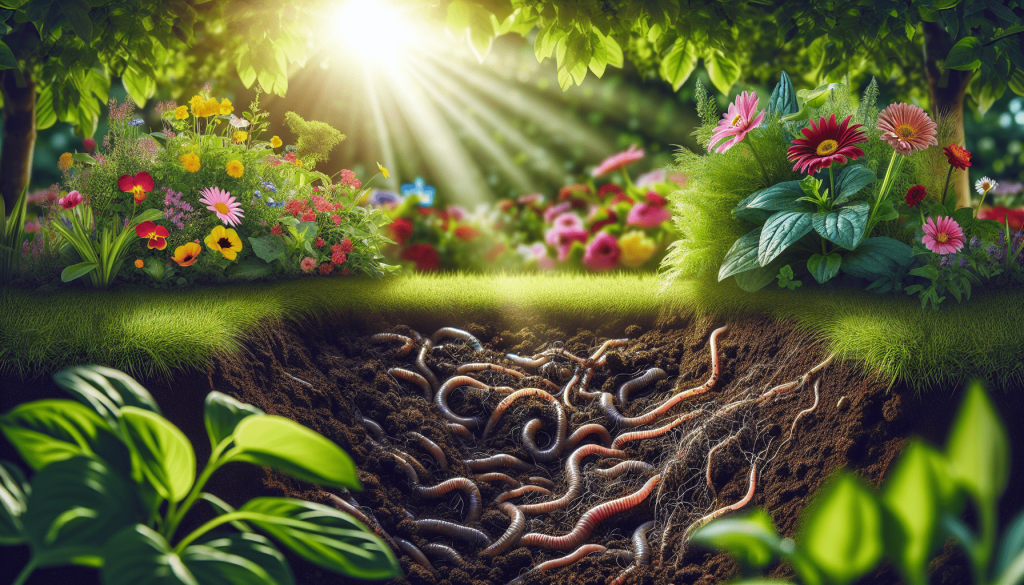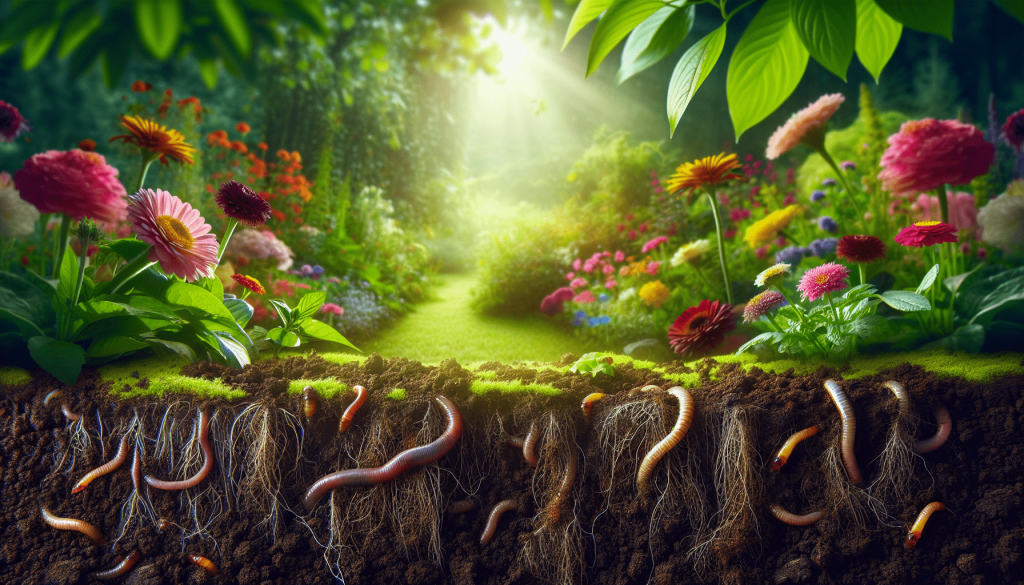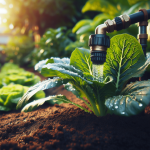This post may contain affiliate links. As an Amazon Associate, we may earn commissions from qualifying purchases.
Have you ever wondered what it takes to cultivate a garden that doesn’t just look vibrant but also thrives beneath the surface? Creating a garden that supports healthy soil biology is key to fostering a landscape that flourishes naturally. This journey isn’t just about the plants you see; it’s a holistic approach that begins with fostering life below ground. When you invest in healthy soil, you’re nurturing a garden ecosystem that is self-sustaining and resilient.
Understanding Soil Biology
Let’s start with the basics: what exactly is soil biology? Soil biology refers to the myriad of living organisms beneath your feet that contribute to the natural processes of your garden. These include bacteria, fungi, protozoa, nematodes, earthworms, and other creatures which, although out of sight, are essential for soil health. They decompose organic matter, cycle nutrients, and help in forming soil structures that enable roots to breathe and stretch.
The Importance of Healthy Soil Biology
Healthy soil biology is the heartbeat of any garden. Without it, nutrient cycling is disrupted, diseases can become rampant, and plants might struggle to survive. Imagine your garden as a bustling city beneath the surface, where each organism has a role. Bacteria break down organic materials, fungi boost plant nutrient uptake, and worms aerate the soil. Together, they create a healthy and vibrant environment that supports plant life.
Key Components of Soil Biology
To cultivate a garden that celebrates healthy soil biology, it’s crucial to understand its core components. This knowledge acts like a treasure map, guiding you to a thriving garden oasis.
Bacteria
Bacteria are the microscopic workhorses of your soil. These tiny organisms are responsible for breaking down organic materials and minerals into forms that plants can absorb as nutrients. They play a key role in the nitrogen cycle, converting atmospheric nitrogen into nitrates, a form usable by plants. Maintaining a diverse and healthy bacterial population ensures nutrients are continuously available for your garden’s flora.
Fungi
Fungi, including mycorrhizae, form symbiotic relationships with plant roots, extending far beyond the vegetative reach to access water and minerals. In return, plants provide fungi with carbohydrates produced through photosynthesis. This partnership is crucial, as it enhances plant nutrient uptake and helps plants withstand environmental stress. Incorporating fungi into your garden ensures a robust infrastructure for nutrient exchange.
Protozoa and Nematodes
Though tiny, protozoa and nematodes are essential players in soil ecosystems. These organisms regulate bacterial populations and play a pivotal role in the nutrient cycling process. By feeding on bacteria, they release excess nutrients back into the soil, making them available to plants. Their presence ensures a balanced ecosystem where no element overpowers the others.
Earthworms
Earthworms are the unsung heroes of any garden. Their burrowing activities aerate the soil, improving its structure and increasing water infiltration. As they consume organic matter, they break it down into rich humus, enhancing the soil’s fertility. Plus, their castings (waste) are nutrient-rich, serving as a natural fertilizer for plants.

Steps to Promote Healthy Soil Biology
Creating a garden that supports healthy soil biology involves a series of thoughtful steps. It’s about working with nature rather than against it, fostering conditions that allow soil organisms to thrive.
Conduct a Soil Test
Before you embark on any soil improvement project, start with a soil test. Understanding your soil’s current nutrient levels, pH, and composition provides a roadmap for what actions are needed. Whether your soil needs more organic matter, a pH adjustment, or specific nutrients, a soil test gives you the insights necessary to proceed with precision.
Add Organic Matter
Organic matter is the lifeblood of fertile soil. By incorporating organic materials such as compost, aged manure, or leaf mold, you introduce a rich food source for soil organisms. These additions improve soil texture, encourage moisture retention, and foster microbial activity — all critical for healthy soil biology.
Implement Crop Rotation
Introduce crop rotation to your garden plan to prevent soil nutrient depletion and disrupt pest and disease cycles. Planting different crops in succession allows soil to recover, maintains nutrient balance, and supports diverse microbial communities. Aim to include nitrogen-fixing plants, such as legumes, in your rotation to naturally replenish soil fertility.
Practice No-Till Gardening
The practice of tilling, while traditional, can disrupt soil structure and harm the organisms dwelling within. No-till gardening preserves the natural soil architecture, protecting roots and the intricate networks of fungi. It also minimizes soil erosion and preserves moisture levels in the soil. By avoiding tilling, you maintain a stable environment for microbial life to thrive.
Grow Cover Crops
Planting cover crops is a clever way to nurture soil health during the offseason. These plants protect the soil from erosion, suppress weeds, and, when they decompose, provide additional organic matter. Choose cover crops that suit your climate and soil needs, such as clover or ryegrass, to support your garden’s ecosystem year-round.
Benefits of Supporting Soil Biology
The benefits of promoting a garden that supports healthy soil biology are myriad and extend far beyond just the health of your plants.
Enhanced Plant Growth
When soil biology is thriving, plants have better access to nutrients, resulting in healthier and more vigorous growth. The network of organisms ensures that nutrients are continually cycled and available, minimizing the need for synthetic fertilizers.
Increased Soil Fertility
A robust soil ecosystem naturally enhances the soil’s fertility. The breakdown of organic matter by microorganisms releases essential nutrients back into the soil, enriching its nutrient profile and cultivating conditions where plants can maximize their potential.
Improved Disease Resistance
Healthy soil biology helps plants build resilient immune systems, making them less susceptible to pests and diseases. Beneficial microorganisms can outcompete harmful pathogens, providing a natural defense mechanism and reducing the need for chemical interventions.
Enhanced Ecosystem Stability
Supporting healthy soil biology contributes to an overall stable and balanced ecosystem. Diverse microbial communities create checks and balances, where prey and predator populations regulate each other naturally, maintaining harmony within the soil environment.

Common Mistakes to Avoid
While creating a healthy garden, it’s easy to fall into a few common pitfalls. Here’s a handy table to help you steer clear of these mistakes:
| Mistake | Why it’s a Problem | What You Can Do |
|---|---|---|
| Over-Tilling | Disrupts soil structure and harms microbes | Opt for no-till methods |
| Chemical Overuse | Kills beneficial soil organisms | Use organic fertilizers and soil enhancers |
| Ignoring Soil Tests | Leads to nutrient imbalances and unsuitable pH levels | Regularly test and amend soil as needed |
| Neglecting Organic Matter | Diminishes food source for soil life | Regular addition of compost and manure |
| Plant Monoculture | Depletes soil nutrients and encourages disease | Implement plant diversity and rotation |
FAQs About Creating a Healthy Soil Garden
As you forge this path toward a more sustainable gardening practice, you may have some questions. Let’s tackle a few of the most frequent inquiries.
How often should I add organic matter to my soil?
Adding organic matter is an ongoing process. Aim to integrate compost or other organic materials at least once a year, ideally in the fall or spring. Consistent additions ensure a continuous food supply for soil organisms and support ongoing soil fertility.
Can I start implementing these practices in an existing garden?
Absolutely! Many of these practices, such as adding organic matter, avoiding chemical use, and incorporating cover crops, can be gradually introduced into your current garden regimen. Consistent implementation will yield results over time.
What if my garden’s soil is predominantly clay or sand?
Both clay and sandy soils can support healthy soil biology with the proper amendments. For clay, focus on incorporating organic matter to improve drainage and reduce compaction. For sandy soils, organic matter helps with moisture retention and nutrient binding. In both cases, patience and continued effort are key.
Closing Thoughts
Creating a garden that supports healthy soil biology is a rewarding endeavor that benefits not only your plants but also the broader environment. By fostering a thriving soil ecosystem, you’re laying the groundwork for a garden that is not only beautiful but sustainable as well. Remember, the heart of your garden lies beneath the surface, where the legions of soil organisms work tirelessly to nurture life. As you cultivate your garden this way, you become part of a larger ecological narrative, promoting a healthier planet one garden at a time.








